Osteochondrosis of the cervical spine is one of the most dangerous neurological diseases. What is this disease and how does it manifest itself? What measures can help prevent this? How to treat cervical spine osteochondrosis? You will find the answers to these questions in this article.
Features of the disease
Osteochondrosis is a degenerative modification of the intervertebral cartilaginous discs, which subsequently affects the bone tissue and nervous system. What happens to this disease? Dehydration or simply dehydration begins due to a metabolic deficiency in the cartilaginous disc, which acts as a shock absorber in the structure of the spine. The nucleus begins to press on the surrounding ring, and the disc extends to the edge of the spine. This phenomenon is called protrusion. If the membrane breaks, an even more dangerous intervertebral hernia occurs.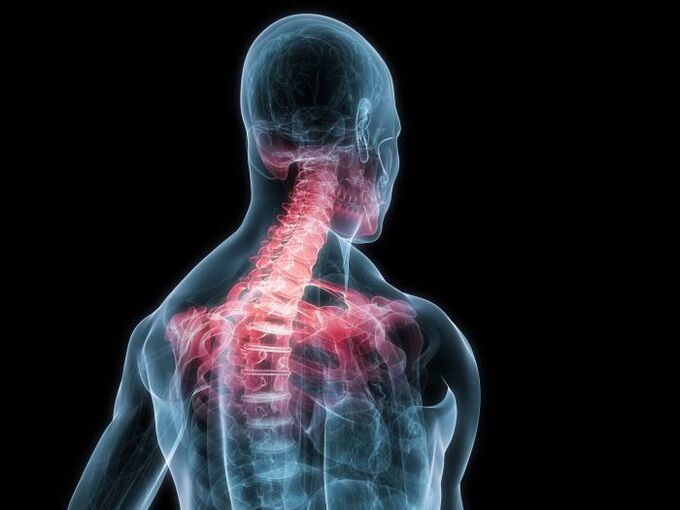
Osteochondrosis of the cervical spine is a disease that causes a lot of pain and discomfort in a person's life. Unlike the thoracic and lumbar vertebrae, the cervical vertebrae are more mobile, the smallest, and are constantly under stress. The disease most often affects these parts of the spine. A large number of nerves and blood vessels are concentrated in the cervical spine. An important large spinal artery passes through here, carrying nutrients to the brain. This narrowing of the arteries, along with the development of spinal cord or cerebral ischemia, is also dangerous with stroke. If these arteries and nerve fibers passing through the cervical spine are affected, the person loses precise coordination of movements, hearing and vision are impaired, dizziness and various neurological diseases are often observed, which will be discussed below.
Reasons
Osteochondrosis of the cervical spine occurs even at a young age. What causes the development of the disease? What causes the onset of such a disease in people under the age of 30? Osteochondrosis of the cervical spine, which requires a lot of time and patience to treat, is caused by two main factors:
- hypodynamics or sedentary lifestyle;
- nutrition.
As a result, there is a violation of metabolism (metabolism) inside the body, especially in the bone and cartilage tissues, the level of salt in the blood rises and they do not find a way out of the bloodstream. "shelter" in the tissues of the kidneys, liver and cervical spine. An unbalanced diet leads to a lack of nutrients in the cartilage, resulting in pathological changes in the intervertebral discs. Osteochondrosis is especially at risk.

Let's name the factors that increase the likelihood of developing the disease:
- heredity;
- age after 40 years;
- overweight;
- frequent hypothermia (it's not for nothing that they say "don't get cold on your neck! ");
- Defects in the endocrine system, disrupts metabolism;
- spinal injuries;
- systemic lupus erythematosus;
- rheumatism;
- nature of activity - drivers, office workers, cashiers, athletes, people engaged in heavy physical labor.
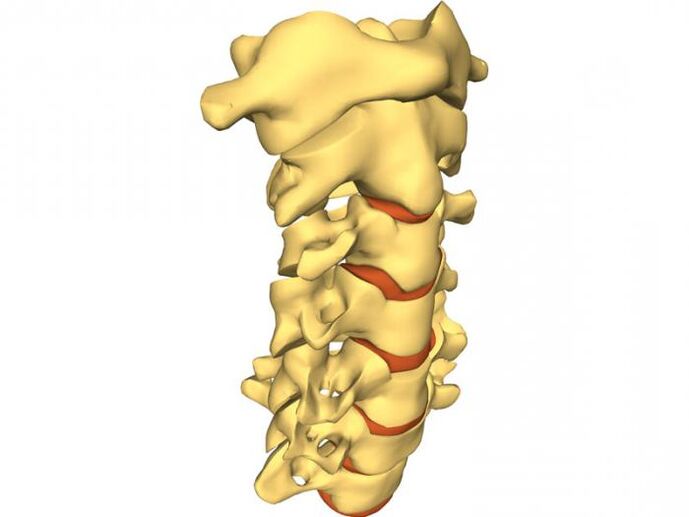
symptoms
How does cervical osteochondrosis manifest itself? The symptoms of the disease and the nature of the resulting pain depend on which segments are damaged. In this regard, the following situations may develop:
- vertebral artery syndrome;
- hypertensive syndrome;
- radicular syndrome;
- cervical migraine syndrome.
Let's look at each one. Severe headaches with vertebral artery syndrome are already visible in the early stages. A person often feels dizzy, gait trembles, and visual acuity decreases. Sudden movements of the head can cause loss of consciousness. Radicular syndrome is characterized by various manifestations. These include:
- cervical or severe neck pain;
- squeak when turning his head;
- weakness and tinnitus;
- numbness and pain in the arm;
- hearing and vision impairment;
- tinnitus;
- cervicobrachialgia or pain from the neck to the arms;
- Swelling and numbness of the tongue.
Cervical migraine syndrome is primarily characterized by impaired blood circulation in the brain tissue, which leads to hypertension and causes the development of symptoms such as noise and ringing in the ears, their blockage, dizziness, rapid pulse. The danger of this condition is the possibility of developing a spinal cord injury. Hypertensive syndrome is accompanied by headache, dizziness, nausea and vomiting (especially in the morning), nervousness, sudden changes in blood pressure, the appearance of dark circles under the eyes, headache.

Hypoxia (oxygen starvation) develops in the brain. Cervical osteochondrosis often presents with a cardiac arrhythmia in which a single heart rhythm is lost. Vegetative-vascular dystonia develops due to compression of the lateral vertebral arteries.
Diagnostics
The first step in diagnosing cervical osteochondrosis is to examine the patient. The neuropathologist visually examines the condition of the spine, back muscles and posture and determines the presence of protruding spinous processes by sounding. During palpation, the doctor will be able to understand which parts of the patient's reaction are affected by the pain. The device uses diagnostic methods:
- radiography;
- computed tomography;
- magnetic resonance imaging;
- dopplerography.
The first method often involves the insertion of a contrast agent into a specific tissue (discography, angiography, etc. ). This is necessary to obtain more accurate information about the characteristics of the disease.
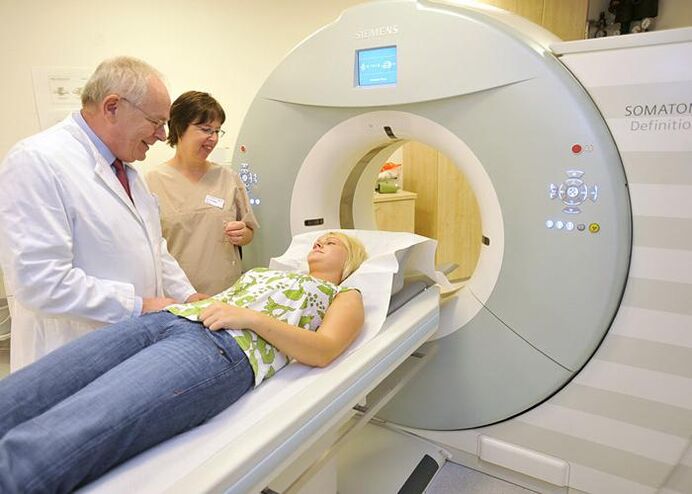
Treatment
Your doctor will tell you how to treat cervical spine osteochondrosis and how not to harm the body. Below are the basic rules and recommendations for dealing with this unpleasant disease, but the beginning of successful treatment is a visit to a neurologist. Treatment of cervical spine osteochondrosis is carried out using all methods. Among them:
- drug treatment;
- physiotherapy;
- traditional medicine;
- exercises.
Osteochondrosis of the cervical spine is the most dangerous, because the important arteries that carry blood to the brain tissue pass through the vertebral processes here. For this reason, taking medication and following doctor's prescriptions should be approached with all responsibility.
Drug treatment
How to treat cervical osteochondrosis using drugs? Drug treatment of the disease includes the following means:
- pain medications;
- anti-inflammatory;
- vitamins;
- chondroprotectors.
Analgesics help relieve pain during cervical osteochondrosis and are used for a short time. The attending physician may prescribe Tramadol, Tolperisone hydrochloride, and Etoricoxib as anesthetics. When there is severe pain, it is possible to use lidocaine injections.

Non-steroidal anti-inflammatory drugs have been developed to reduce inflammation, including Diclofenac, Ibuprofen, and Piroxicam. Such funds are also used abroad. These are various ointments and gels: "Diclofenac" and others. Of the vitamins, the most valuable in terms of care therapy for osteochondrosis are B vitamins, which can reduce tissue sensitivity and weaken the neurological manifestations of the disease.
Chondroprotectors
These have been developed by pharmacologists to restore cartilage tissue. There are two active ingredients in such drugs - glucosamine and chondroitin. Both compounds can be included in one drug or used separately. Examples of chondroprotectors: glucosamine patches, chondroitin sulfate ointment, etc. These funds should be used for a long time, at least 3-6 months, otherwise you will not get the desired result.
Blockade
In case of severe pain, injection of the drug directly into the lesion area helps to alleviate the patient's condition. This injection is called a block. The drug mixture is generally used as a medicine. One of them has an analgesic effect, the other is designed to eliminate inflammation. Blockade can only be done by a highly qualified doctor, in no case do this procedure yourself! This can damage the patient's health and can be life threatening. This injection is given in two ways:
- inject the drug into the joints and tissues around the joint;
- direct injection into the intervertebral disc.
Physiotherapy
Physiotherapeutic procedures are very effective in cervical osteochondrosis. They accelerate recovery and have a beneficial effect on the whole body. Before talking about them, we list the contraindications for physiotherapy:
- tumors, oncological diseases;
- blood diseases;
- acute dermatological diseases;
- to take drugs that can increase the effect of physiotherapy.
How to treat cervical spine osteochondrosis using physiotherapy? In this regard, the use of many methods has a positive effect. For example, shock wave therapy is the application of acoustic waves to a lesion. Reduces inflammation, swelling, pain, stimulates collagen synthesis and improves tissue metabolism. Laser therapy, magnetotherapy, ultrasound therapy, vibration therapy are also used. Low-voltage pulse currents or diadynamic therapy reduce the severity of pain by affecting the painful area. Electrophoresis with procaine has a analgesic effect in case of inflammation. Additional physiotherapy methods include ultraviolet radiation of the affected area and spinal traction or detensor therapy.
Physiotherapy exercises
Gymnastics for cervical spine osteochondrosis allows you to get tangible results. It is important to apply only in the last stage of treatment, because in the first and middle stages, active movements in the neck are strictly prohibited. Gymnastics is performed with a cotton-gauze collar attached to the cervical region. Resistance movements are performed with the help of a doctor who tries to bend the patient's head with his palm, and he in turn tries to cope with the doctor's actions. This strengthens the neck muscle corset. Holding action is also helpful. This is so. The patient lying on the couch raises his head and holds it in this position for 5 seconds. If the pain and neurological syndrome have already been eliminated, this time it rises to 40-60 seconds. Therapeutic gymnastics allows each exercise to be performed no more than 5 times in one approach.
Gymnastics for cervical lumbar osteochondrosis is designed for:
- improve blood supply to the affected area;
- strengthen the back and neck muscles;
- reduce vertebral load;
- normalize joint mobility;
- Accelerates glucose metabolism for active nutrition of intervertebral cartilage discs.
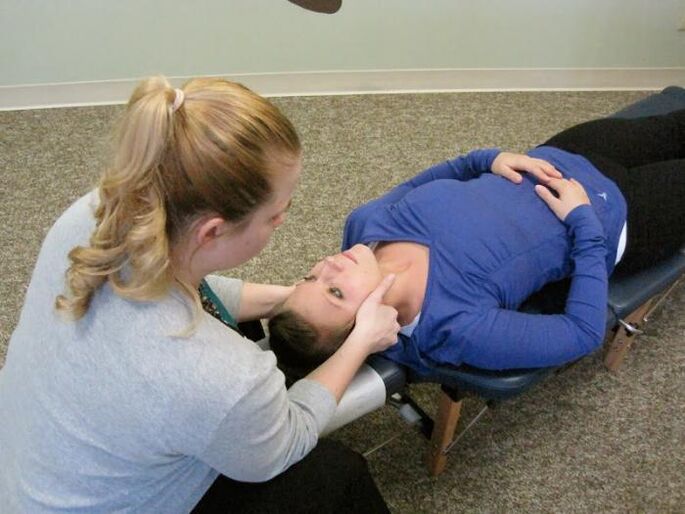
In a disease such as cervical osteochondrosis, massage is required. It refers to manual therapies and aims to relax muscles, improve blood circulation and lymph movement at the site of the lesion.
Traditional medicine
Treatment of a disease such as cervical spine osteochondrosis, folk remedies, is considered as an adjunct and in no case accepted as maternal therapy. There are many recipes that use different herbs and products. Products such as lemon, garlic, burdock or horseradish leaves (in the form of compresses), dandelion root, St. John's wort, yarrow, lavender and others are widely used. When using traditional medicine, the patient is responsible for his own health.

Nutritional Features
How is cervical osteochondrosis treated? This question is asked by many. But how to eat with this disease, what foods will be useful? Let's list them:
- dairy products;
- lean meat and fish;
- mixed meat;
- marmalade;
- jelly;
- fresh fruits and vegetables;
- Sources of vitamin B - liver, walnuts, brown rice, broccoli, buckwheat, brewer's yeast, green vegetables, kidneys;
- complex carbohydrates - whole grain bread, cereals, vegetables;
- vegetable oils - olive, sunflower, flaxseed oil.
Don't forget products that can be harmful in the treatment of osteochondrosis. Avoid sweets, baked goods, alcoholic beverages, smoked meats and salty foods, spicy foods, animal fats, coffee and strong tea. Remove sugar, potatoes and white bread from the menu.
Prevention
Do not neglect morning exercises, as well as stretching during the working day. Helps improve blood circulation, thereby providing a supply of nutrients to cartilage tissue and relaxing muscles. Get more exercise - regular jogging, fitness classes are an important measure to prevent osteochondrosis. Excess weight often leads to the development of the disease, so try to follow the reading on the scales. Do not eat too much, do not overeat high-calorie foods, fatty and sugary foods. Get rid of all chronic infections in your body. Particular attention should be paid to the correct position of the body during sleep and rest - the neck muscles should not be tightened.
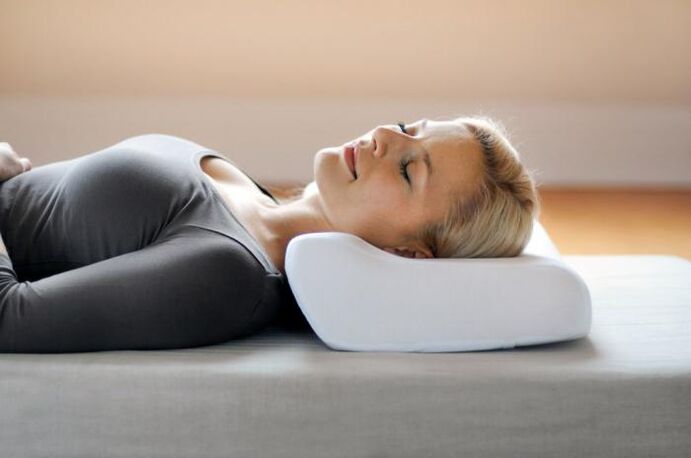
For example, every patient should have an orthopedic pillow for cervical spine osteochondrosis, and its use is also useful in the prevention of the disease. Resting on it relaxes the neck muscles and there is no strong pressure on the arteries.
cartilage health and diet
I would like to highlight the tendency of girls and women to face different diets that are as cruel and low in calories as the body begins to use the substances of its own tissues as a source of energy. Remember that any diet should be balanced, contain the necessary minimum nutrients, primarily protein, and be accompanied by vitamin and mineral intake. Otherwise, in addition to having old cartilage, which is very difficult and expensive to repair in the future, you run the risk of developing a number of unpleasant diseases. And remember that the treatment of cervical spine osteochondrosis will be successful only if the patient follows all the recommendations and prescriptions of the attending physician.
































